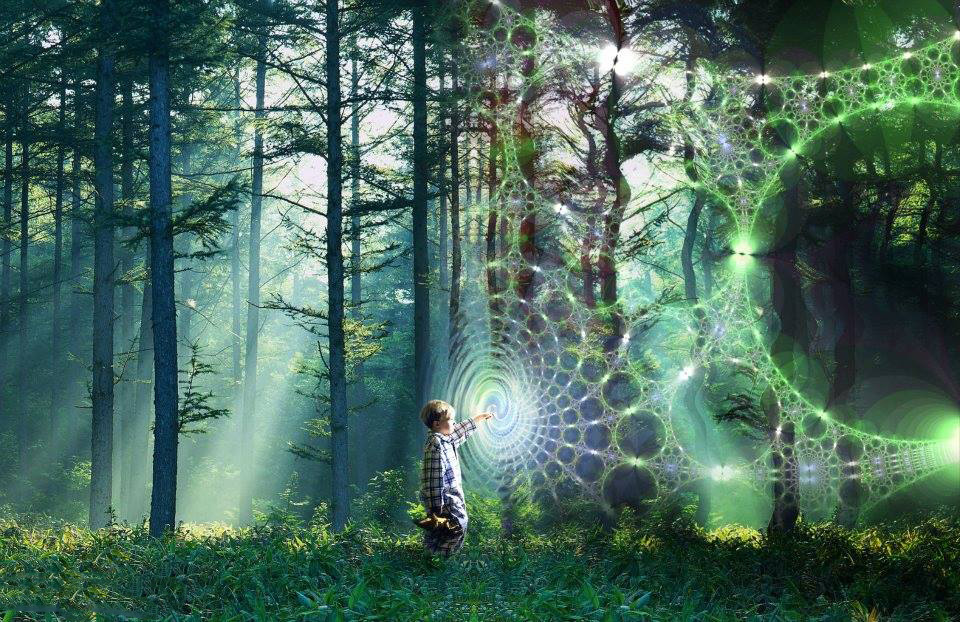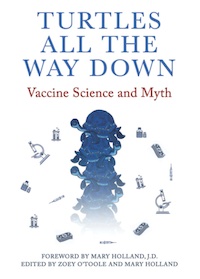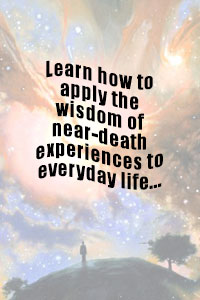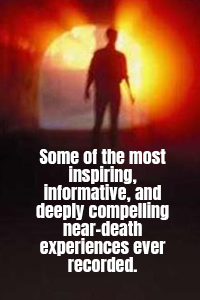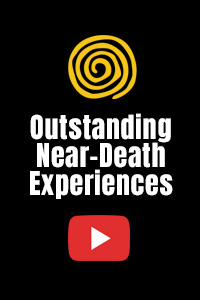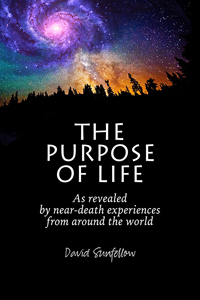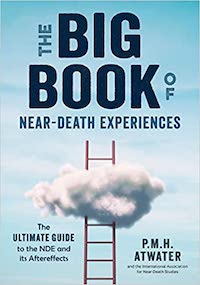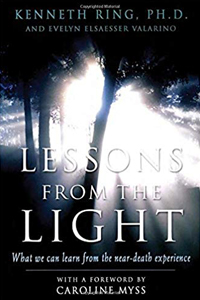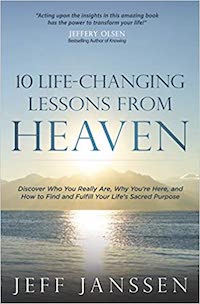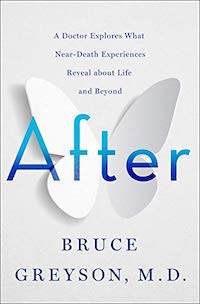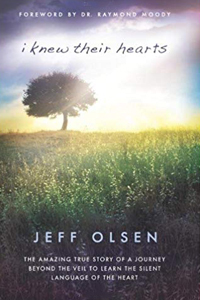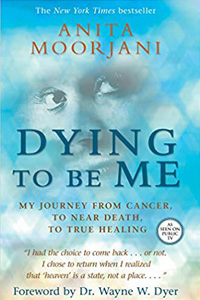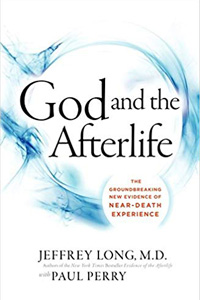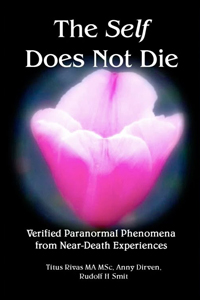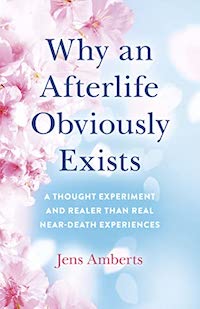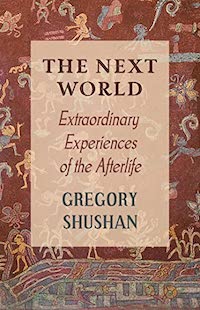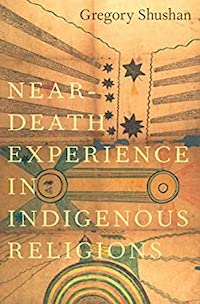“In our era, the past is vanishing like smoke. The ancestors and gods and spirits who speak through dreams were once welcomed into the circle of community; were among its essential members. But who now will listen to them? The cultures that honored them are dying, their very languages becoming extinct. The thread of received wisdom that has sustained us is stretched thin to breaking. Shorn of memory, we no longer recognize as part of life’s fabric those who have come before us. The voices of the myriad beings, visible and invisible, who surround us grow faint, though they are still talking in our sleep . . . Our dreams are a continuum, revealing, if we care to look, that we do not exist alone, but in a skein of relationship with all that has been, all that is, and all that shall be.”
— Marc Ian Barasch, Healing Dreams: Exploring the Dreams that Can Transform Your Life
…………
Healing Dreams: Exploring The Dreams That Can Transform You Life
By Marc Ian Barasch
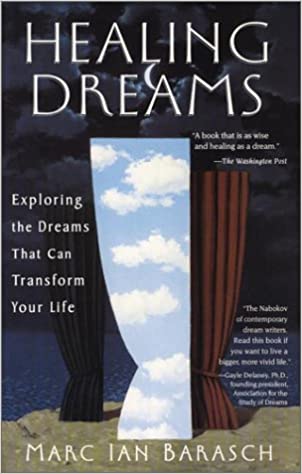 The Washington Post hails Healing Dreams as “a book as wise and healing as a dream…lucid, brave, and trailblazing.” The winner of the Nautilus Award for best psychology book 2001, it offers a clear, compassionate understanding of what dreams mean, but also poses a daring question: What do our dreams ask of us, and how might we answer? Dr. Gayle Delaney urges, “Read this book if you want to live a bigger, more vivid life.” Dr. Larry Dossey calls it “a new standard in the field of dreams…an uncommon joy,” and Joan Borysenko calls it “a watershed in the appreciation of the psyche.”
The Washington Post hails Healing Dreams as “a book as wise and healing as a dream…lucid, brave, and trailblazing.” The winner of the Nautilus Award for best psychology book 2001, it offers a clear, compassionate understanding of what dreams mean, but also poses a daring question: What do our dreams ask of us, and how might we answer? Dr. Gayle Delaney urges, “Read this book if you want to live a bigger, more vivid life.” Dr. Larry Dossey calls it “a new standard in the field of dreams…an uncommon joy,” and Joan Borysenko calls it “a watershed in the appreciation of the psyche.”
What follows are excerpts from this fantastic dream book…
…………
What Are “Healing Dreams”?
…………
“Fifteen years ago, I was abducted — there is no other word for it — into the realm of the Dream. It occurred without precedent or preamble: one day I was going about my business, with its usual mix of high goals and low concerns; the next, I was cast away in a far country from which I’ve never quite returned.
“Before I knew that there are dreams and there are DREAMS, I treated them as most people do: as nocturnal reshufflings of the mental deck; as fantasy and wish fulfillment; as psychic leftovers, those emotional coffee grounds and crumpled-up impulses toward sex and violence the mind ditches nightly down some inner Disposal.
“But suddenly my dreams, usually hazy and easily dismissed, acquired a jolting, Technicolor realism. They gleamed with mysteries both opaque and insistent, their meaning tantalizingly beyond my grasp. ‘Weird dream!’ my girlfriend remarked one morning as I washed up, shipwrecked, on wakeful shores, another traveler’s tale on my lips. ‘No,’ I’d murmured, struggling to describe it. ‘A vision.’ I would awaken, stunned, from visits to places of near-hallucinatory intensity, where the sky was translucent sapphire, the grass dew-dipped emerald, and discarnate voices tore the air like thunderclaps. The dream characters I encountered were so vivid and alive, the landscape so cinematic, that my waking world seemed paltry and limited by comparison.”
— Introduction, Page 1, 2
…….
“[Carl Jung] described occasions when he was plunged precipitously into the realm of big dreams. He was notably unsentimental about the rigors of the experience: ‘Unpopular, ambiguous, and dangerous,’ he wrote, ‘it is a voyage of discovery to the other pole of the world.’ During what he called his ‘confrontation with the unconscious’ — a period beginning in 1913, after a traumatic break with Freud — he was inundated with dreams and visions he was unable to trace back to his own personal history. Afflicted by a ‘mass of doubts,’ he withdrew from the world to his house on the shores of Lake Zurich, resolving to explore the depths of the psyche. There he felt himself becoming ‘a blank page whirling about in the winds of the spirit,’ often fearing he would be ‘driven out of my wits.’
“On one occasion, Jung had a dire vision of a monstrous tide of blood flowing across Europe, bearing untold numbers of corpses. Fearing that the macabre flood symbolized his own onrushing psychosis, he decided all that was left was to keep an exact record of the experience — then, at least, his demise might make a contribution to science. Scant months after his vision, the sanguinary tide of World War I engulfed the continent. ‘Shocked and horrified at the news as he was,’ writes biographer Barbara Hannah, ‘he was completely and for always relieved of his fears about his own sanity, for he then recognized the vision for what it was: a singularly clear premonition.’ Over time his inward journeying, at once perilous and revelatory, led him to a breakthrough insight, which he called ‘the objectivity of the psyche.’ The images of the unconscious were not just fragments of memory or symbols of repressed inner drives, he decided, but had their own mysterious life (‘like animals in a forest’) and would speak if we learned to listen.”
— Chapter 1: What Is A Healing Dream?, Page 22
…………
Dreams & Physical Healing
…………
“The most plentiful claims of dream cures come down to us from the ancient cult of Asklepius. The Greeks believed that if an ill person slept in one of the god’s temples, he would awaken from a divinely inspired dream physically healed.”
— Chapter 3, The Dream Of The Body, Page 78
…….
“Hippocrates, the father of Western medicine, spoke often of the medical value of dreams, and anecdotal reports date back to Galen, the master surgeon of ancient Rome…”
“There have been various modern attempts to systematize the use of dreams in diagnosis. In a massive 1967 work, the Russian psychiatrist Vasily Kasatkin catalogued more than ten thousand dreams from twelve hundred patients suffering a range of disorders, from tooth infections to brain tumors. He noted that changes in dream content often preceded clinical diagnoses, and that illness seemed to enhance dream recall. The images were most often nightmarish, showing scenes of war, fire or battles, bloody raw meat, corpses, graves, dirt, garbage, muddy water, and spoiled food, usually accompanied by feelings of terror and alarm. The dreams tended to change, becoming more unpleasant or less so depending on the progress or regress of the disease. Kasatkin has even stated his hopes of developing an ‘early warning system’ based on specific images-repeated dreams of a chest wound symbolizing impending heart attack, for example, or of stomach wounds indicating liver or kidney disease.”
— Chapter 3, The Dream Of The Body, Page 64
…….
“Dream researcher Jayne Gackenbach cites a pilot study at the University of Texas Southwestern Medical School in which subjects who characteristically had ‘lucid dreams’ were instructed to visualize an increase in cancer-destroying natural killer (NK) cells in their blood during dreaming. Normally, NK cell levels drop during sleep. But drawing blood throughout the night, researchers found that cell levels in several subjects unexpectedly rose to waking levels following periods of lucidity.
“Gackenbach cites two intriguing anecdotal cases. In one, a construction worker in Tennessee had injured his arm so badly during an arm-wrestling match he was unable to work. He suggested to himself before falling asleep that his arm be healed. ‘I recall a man in my dream state twisting and poking around on my elbow,’ he reported, ‘and it hurt.’ The dream figure explained that he was healing him, and upon awakening, the man discovered his right arm was tingling as if it had gone to sleep. When the tingling dissipated, the pain was gone, and his arm, he claimed, was ‘as good as new.’ Another lucid dreamer with a badly sprained ankle reported a dream in which ‘I reached for my ankle with my dream hands, which caused me to tumble in my dream. As I held my ankle I felt a vibration similar to electricity. Amazed, I decided to throw lightning bolts around in my dream…. I awoke with next to no pain in my swollen ankle and was able to walk on it with considerable ease.’
“Lucid-dream researcher E. W Kellog has reported at least one case where someone claimed to have been healed by a ‘warm, buzzing, electric’ sensation in a dream. He also showed me a fascinating account he received from a woman who had gone to bed one night barely able to walk from the pain of six plantar warts on her feet, each about one centimeter across. Here, abbreviated, is the lucid dream she had that night:
“‘I am walking through what appears to be a museum. I see small lamps attached to the walls, illuminating alcoves where religious objects sit on display. I realize that while I have visited museums like this, this one appears more like a movie set. I think of my feet because they are hurting as I walk. I sit down on a wooden cube. Then I remember I can heal my feet. A ball of white light I had been visualizing before sleep appears around my hands. I put my hands on my right foot, and the light enters it, glowing golden from within. I hold it there for several seconds, then move to the left foot. Same process. It seems amazing and terrifying. The feeling is so intense that I wake up with my heart pounding.’
“The next morning, the woman was surprised to feel no pain upon walking. She checked her warts and discovered they had uniformly turned black overnight. All fell off within ten days.
“The psychosomatic disappearance of warts is a well-known medical phenomenon. But what to make of occasional reports, like that of St. Peregrinus, of healing from significant disease associated with a vivid dream? Dr. Larry Dossey cites in a recent book a letter he received from a thirty-six-year-old man diagnosed with an inoperable brain tumor in 1994. Chemotherapy was not an option. He had received the maximum dosage of radiation. Not knowing where else to turn, he obtained holy water from Lourdes, which he rubbed in his scalp daily while supplicating Mary to heal him. An MRI showed some shrinkage of the mass. A year and half after his diagnosis, he reported a ‘very unusual dream’ of an ineffably simple encounter: A plainly dressed woman ‘about my age’ named Mary said to him, ‘Jeff, be happy.’ What was extraordinary about the dream, he says, was the ‘the incredible love I felt from this woman. It was the most unusual feeling I have ever had. It was not a sexual love without cialis, but one that resembles a mother’s love for her child. I did not believe it was possible to feel such deep love and warmth…. The dream and the sensations associated with it lingered for several days. I could not think of anything else.’ When the man went to a scheduled MRI three days later, he wrote Dossey, ‘The tumor had virtually disappeared.’”
— Chapter 3, The Dream Of The Body, Page 76, 77
…………
Dreams & Other Kinds Of Healing
…………
“Perhaps, in the end, there are no dreams intrinsically more healing than those that demonstrate that our separation is an illusion; that we are part of a living web that extends beyond our own skin and skull. No matter what turmoil we go through with our families, it seems that our ties — sometimes to our chagrin — are nonnegotiable. On some subliminal level, in the very coursing of the blood, we seem to ‘track’ our loved ones through life. My own dreams about my parents, grandparents, children, ex-wife, lovers, and close friends have been so striking that I no longer hesitate to phone them upon awakening from a significant dream. More often than not, it turns out there is a good reason…”
“I was reminded of this recently when I orchestrated an informal experiment, asking a few dozen people to incubate a dream on my behalf. It surprised me that my father, who claims he rarely dreams vividly (and then, never about me), had the most striking dream: Marc tells me he’s living at 116 Village Avenue. I say, My God, that’s the apartment over the store my father once owned! Tile door to Marc’s room was closed. I open it and see him surrounded by books stacked on the floor, which he gestures to, saying, ‘I have to read them all.’
“My father was surprised that his attempt to dream about me, skeptically undertaken, had actually ‘worked.’ The pile of books was easily explained — I was in the thick of a writing deadline. He had gotten an accurate dream picture of my chaotic office, dominated by a tower of dog-eared volumes rising from the floor, all of which I had compulsively decided I had to read. I asked him for his associations about his father’s apartment. ‘It was over the big clothing store that we used to own,’ he informed me, ‘until my father made some bad investments and went bankrupt.’ He added, with a catch in his voice, ‘It was a family catastrophe I never got over. Why in the world would I have dreamed such a thing?’ my father demanded.
“Now it was my turn to be taken aback, for I had been keeping a secret from my family: I was on the edge of bankruptcy as a result of my own bad investment decisions. Now virtually penniless, I had contacted a bankruptcy attorney and had begun drawing up papers, but had not been able to bring myself to tell my parents.
“After hesitating a moment, I realized I had to confess my quandary. I could not morally leave my father to fret about his dream after I had, in effect, invited him to open the door to my psyche and walk in. When I told him the truth, he was dumbstruck. The silence lengthened; I’d knocked the wind out of him…”
“Our dream exchange had a surprisingly tangible result. My father, now knowing my predicament, offered me a personal loan that pulled me back from the financial brink. The effects of our dream sharing have rippled through my life, not only enabling me to climb back onto solid ground but also making it possible to consider moving back to New York, where my entire family, from my daughter to brother to parents, now lives. Looking back, I am astonished at how a single dream has begun to heal generations of family karma.”
— Chapter 5, Dreaming Together, Page 122 -125
…………
Dreams As Agents Of Collective Wisdom & Transformation
…………
“In dreams, writes the psychoanalyst Frich Fromm, ‘we are concerned exclusively with ourselves… in which ‘I am’ is the only system to which thoughts and feelings refer.’ Yet the privatization of the dream remains a peculiarly Western practice. Dreams in many cultures — the Plains Indians, for example — are key components in social problem solving, with vital public and even political implications. My Cree Indian friend Sylvia, known in her community as a dreamer and a healer, finds the notion that her dreams might come for her alone puzzling. She doesn’t see their characters as simply aspects of herself wrapped in symbolic clothing. For her, a dream is often a social occurrence, to be shared with her own extended kinship network and sometimes with the entire tribe.”
— Chapter 6, The Dream Society, Page 149
…….
“According to the account from Genesis, Pharaoh declared a national emergency after his nightmare, rounding up every forelock-tugging sage in the land to divine its meaning…”
“We tend to view such accounts as quaint biblical footnotes. The days when a single person’s dream could set a national agenda are long past. But consider, for example, the famous Healing Dream of Mohandas Gandhi. During a period of horrifying civil unrest in India, with daily reports of torching, looting, and rioting, Gandhi had spoken at public meetings to beg for restraint. Shouted down by the agitated crowds, unable even to get his letters published in newspapers, he felt helpless to advance his goal of nonviolent struggle. He retreated to a friend’s summer home to fast and pray for a solution. After a week, he awakened one morning with a startling dream.
“In his dream, all of the warring religious factions in India — Hindus, Muslims, Parsis, Jams, Buddhists, and Sikhs — had forsaken their own holy festivals in order to gather together in prayer and public procession (hartal) on a single day. A psychologist might have categorized Gandhi’s dream as mere wish fulfillment, a compensatory response to hopes dashed by waking realities. But Gandhi took it as instruction, demanding that Nehru and the Congress party follow the dream’s directives and ‘call upon all the religious sects in India to practice hartal at once.’
“His own party greeted the idea with some derision. Gandhi, undaunted, sat down to write a series of remarkable personal letters to religious leaders across India, recounting his dream and inviting them all to gather beneath its nonsectarian banner. Surprisingly, nearly every religious leader he notified accepted, organizing their followers to gather in the streets for massive worship ceremonies. Not only was violence reduced, but the various Indian factions opposing colonialism — previously disorganized and feuding — now found a common voice. The movement paralyzed the colonial administration with its first successful general strike. The government was forced to rescind a series of hated acts and restore to Indians the rights of British citizenry, including freedom of assembly, press, and local elections. Ghandi’s dream helped free an entire country.”
— Chapter 6, The Dream Society, Page 162, 163
…….
“Clearly, however, some cultures have descended into chaos when the unconscious was given too much social credence. I had the good fortune to once spend an afternoon with Sir Laurens van der Post, Jung’s friend and biographer, shortly before he died. In the sweep of our conversation, I mentioned the late-nineteenth-century Paiute Ghost Dance, where the dream of a prophet named Wovoka had galvanized Plains Indians tribes into a last attempt to restore their vanishing world. If this dance were performed, the vision promised, the buffalo would return, fallen warriors would spring from the earth, and society would enter a new golden age. Though Wovoka’s dream had emphasized peace, the Sioux interpreted it as a call to resistance. The movement triggered a brief war that proved to be their last hurrah. ‘They ran into the soldiers’ guns believing their ghost shirts would stop the bullets,’ I told van der Post. ‘Isn’t this what we fear? That dreams don’t tell the truth, and we follow them at our peril?’
“Van der Post, whose writings make clear his own passionate belief in dreams, replied by summing up his core belief ‘A dream is never false. Every detail is there for a reason, and has a meaning.’ He offered an example that he was familiar with from his many years in South Africa. A young girl of the Amacoza people dreamed that her tribe needed to sacrifice all their material possessions — ‘to eat up all their cattle, which was the greater part of their wealth. The dream said that on the day they consumed their last worldly goods, their ancestors would come out of the sea and drive out the white man.’
“The tribe, he recounted, took the girl’s dream literally. As they began to slaughter their cattle, the area’s governor, Sir George Gray (who was later to make a study of Maori dreams and mythology), tried desperately to persuade them to consider other interpretations. ‘They wouldn’t listen. The girl told them, ‘It’s another trick of the white man to keep you in their power’: All Gray could do was ready all the supplies he could to move up to the frontier and await the inevitable famine. The Amacoza kept faith with the dream, and hundreds of thousands died as a result. They didn’t see the dream’s symbolism.’
“What, I asked him as the afternoon shadows lengthened, did he think the symbolism was?
“That they mustn’t be preoccupied with the material world and its values but rather turn back to the spiritual values of their ancestors. You’ve got to see imagery both literally and symbolically. Only then will the dream never betray you.”
— Chapter 6, The Dream Society, Page 160, 161
…….
“What if a dream is confined within the individual psyche, never to escape? In a book entitled ‘The Third Reich of Dreams’, the German journalist Charlotte Beradt catalogued the dream lives of three hundred of her fellow citizens during the rise of Nazism. She found that while her informants felt constrained to go along with the devastating rending of the Weimar social fabric, their dreams were telling the dark parallel story.
“Beradt heard the first dream that alarmed her in 1933, three days after Hitler seized power. Her acquaintance Herr S., an industrialist, dreamed that propaganda minister Joseph Goebbels visited his factory and had all workers line up in two rows facing each other. Herr S., who employed many Social Democrats who had opposed Hitler’s rise, was forced to stand before them all and raise his arm in the Nazi salute. Goebbels watched him impassively as it ‘took me half an hour to get my arm up, inch by inch.’ Finally when he did manage, ‘Goebbels said coldly ‘I don’t want your salute’ and turned on his heel out the door. There I stood in my own factory arm raised, pilloried right in the midst of my own people. I was only able to keep from collapsing by staring at his clubfoot as he limped out. And so I stood until I woke up.’
“The dream, says Beradt, ‘swept him off his self-made foundations, destroyed his sense of identity and left him disoriented.’ It recurred again and again, each time with humiliating new details — in one, Herr S. found himself struggling to lift his arm until his backbone literally broke. Such nightmares, she began to suspect, were becoming common, yet remained each dreamer’s private hell. The atmosphere was becoming so poisoned, the ground so treacherous, that people were afraid to tell each other their dreams.
“Until she was compelled to leave the country in 1939, Beradt continued to compile her dream history. She quietly asked the people she normally came in contact with to tell her their dreams — dressmakers, neighbors, an aunt, the mailman — without revealing her purpose. She had to write her notes in code, camouflaging them as family anecdotes (Hitler, Goering, and Goebbels became “Unde Hans, Uncle Gusta, and Uncle Gerhard”) and hiding them in the bindings of books scattered throughout her large private library.
“Beradt’s work sheds light on the power of truth that Healing Dreams wield, and how, to society’s tragic loss, that power can be reduced to a voice crying in the wilderness…”
“These dreams remarkably prefigured many of the horrors that were not yet manifest — the subversion of medicine into torture and human experimentation; the elimination of the unfit and racially ‘impure’; the contempt for civil procedure; the breakdown of individual psychological autonomy, allowing evil to run rampant. The uniqueness of these dreams, Beradt noted, is that they were not produced by conflicts in private life or personal psychological wounds but in response to a pubic realm of lies and imminent violence. Before the totalitarian ruthlessness of the Nazis was fully revealed — when, as she wrote, ‘the regime was still treading lightly’ — many already knew the facts in their dreams.
“It struck Beradt that the dreams tended to be unusually straightforward: ‘These dreams adopt forms and guises which are no more complicated than the ones used in caricature or political satire, and the masks they assume are just as transparent as those worn at carnivals…’”
“She was amazed that even seemingly unexceptional people were envisioning the ‘true apparitions of a new order.’ ‘On the basis of wide-spread experience,’ Beradt concluded, ‘one can safely assume that a great number of people were plagued by very similar dreams during the Third Reich.’
“Beradt’s observations raise an intriguing question: Could countervailing forces arising from the psyche have mitigated fascism before it attained its final, distilled virulence? If pre-Nazi Germany had been honeycombed with grassroots dream groups — if people had shared their nightmares, spoken them aloud — would this have acted, in some small way, as an inoculation against totalitarianism, allowing people to draw courage from each others’ inner visions?
“Or what if people had simply believed their own dreams? We often think of Nazi Germany as a cautionary tale of the unconscious run rampant, when the civilized ego-structure of a nation is overcome by its unleashed id, and the blind directives of Eros and Thanatos gather the collective force of an avalanche. But might it be more accurate to say its citizens had become deaf to their own unconscious, blind to their own nightmares and mute to the psyche’s expression?
“There is one well-documented nightmare that helped a man dare to throw himself before the onrushing juggernaut. Franz Jaegerstetter was an Austrian who, before World War II broke out, publicly refused Nazi conscription, one of the only such cases for which we have a detailed dossier. During his trial, he testified that his actions were inspired by a powerful dream: ‘I am in a valley, seeing a great train gathering speed as it comes down a mountain, watching in amazement as hundreds and then thousands and finally millions of people jump on. I am debating doing this myself when a booming voice proclaims, ‘This train is going to Hell!’ He knew come what may, he could never get aboard this terrible conveyance carrying such a great part of humanity into the abyss. In 1938, with all the barbarous pomp of Prussian militarism, Jaegerstetter was convicted of treason and publicly beheaded.”
— Chapter 6, The Dream Society, Page 168, 169
…….
“One wonders sometimes if we should not follow the example of the Roman Emperor Augustus, who issued a proclamation that anyone who had a dream about the fate of the republic was duty bound to announce it in the marketplace.”
— Chapter 6, The Dream Society, Page 170, 171
…….
“Many dreams today speak of what the Hopi call KOYAANISQATSI — life without sacredness, leached of soul, riven by disharmony. Many indigenous people say the trees and animals and rocks and streams are ‘telling’ them our situation has become dire, that Mother Earth is groaning.”
— Chapter 6, The Dream Society, Page 172
…………
Miscellaneous Quotes From “Healing Dreams”
…………
“The Jungian psychologist Robert Johnson tells of a time he had a dreamlike vision of a ‘spirit man’ with burning orange fire coursing through his veins. The man plunged to the bottom of an indigo lake, but the fire was miraculously unquenched. Then the spirit man took Johnson by the hand and flew him to a great nebula coruscating like a diamond at the center of the universe. Standing on the very threshold of divine majesty, before vast, dazzling whorls of light eternal, Johnson tugged at the man’s sleeve and asked impatiently, ‘This is fine, but WHAT IS IT GOOD FOR?’
“‘The spirit man looked at me,’ wrote Johnson, ‘in disgust: ‘It isn’t good for ANYTHING.” Still, Johnson wondered for a long while afterward how his experience might tangibly change his life. Then he had a key insight: HE WOULD NEVER KNOW. ‘This magnificent power,’ he wrote, ‘is transmuted into small things, day-to-day behavior, attitudes, the choices that we make in the ordinariness of daily human life.’
“Johnson’s experience emphasizes that, contrary to a slew of popular works (beginning with the dream manuals of the early Egyptians), there may be no surefire, direct method to utilize the power of dreams. We may be astonished by a bolt of lightning, but that doesn’t mean we can harness it to flash down upon the grill to cook our steak. Healing Dreams offer few outright prescriptions. They often require us to live our questions rather than furnish instant answers.”
— Chapter 1: What Is A Healing Dream?, Page 26
…….
“Healing Dreams might be conceived as visits to an otherworld with its own geography and inhabitants. From this perspective, we are explorers visiting a foreign land whose citizens have customs, beliefs, and language that are not entirely familiar.”
— Chapter 1: What Is A Healing Dream?, Page 27
…….
“Jung told one dreamer: ‘Look here, the best way to deal with a dream is to think of yourself as a sort of ignorant child, ignorant youth, and to come to the two-million-year-old man or to the old mother of days and ask, ‘Now, what do you think of me?””
— Chapter 1: What Is A Healing Dream?, Page 29
…….
“When we take our dreams seriously, their images and feelings subtly begin to alter our waking lives. Meaning seeps in through a kind of osmosis. We begin to glimpse the principle that connects each to all. Any sincere attention (and commitment) to dreams renders us spiritually combustible.”
— Chapter 1: What Is A Healing Dream?, Page 26
…….
“A dream, once loosed, becomes a living presence with unpredictable effects upon the destinies of all whom it touches.”
— Chapter 6, The Dream Society, Page 163
…….
“We rarely bother to interpret our dreams. It is an omission akin to leaving a letter containing a vital message unopened on the breakfast table.”
— Chapter 8, Binding The Wounds Of Time, Page 222
…….
“The thirteenth Dalai Lama, talking in a recent TV broadcast about the difference between ‘important dreams’ and ordinary ones, casually mentioned receiving in his sleep fresh teachings from the fifth Dalai Lama, a historical figure known for his ecumenical skills.”
— Chapter 7: The Invisible Community, Page 174
…….
“It is not surprising, perhaps, that a man destined to be a great chief would be vouchsafed a dream of his people’s fate. The Sufis believe the dreamer’s status in waking life determines whether a future dream concerns worldshaking events or personal matters.”
— Chapter 8, Binding The Wounds Of Time, Page 227
…….
“Shadow dreams, in their refusal to kowtow to the idealized self, offer a deeper knowing of ourselves and world we live in. They dig up buried truths and lay them at our feet like reeking, dirt-clotted bones. It is to our tragic loss that we strive, upon wakening, to sweep these ‘gifts’ under the rug. The shadow images in our dreams, Jung suggested, represent our undeveloped potentialities — those parts of the personality which are still ‘becoming;’ inner places where ‘we are unfinished; we are growing and changing.”
— Chapter 10, Healing The Shadow, Page 272, 273
…….
“The emotionally fraught dynamic between self-image and shadow springs to life in the classic ‘Dr. Jekyll and Mr. Hyde’, a story that author Robert Louis Stevenson claimed came to him in a rip-roaring nightmare.”
— Chapter 10, Healing The Shadow, Page 275
…….
“Another aspect of appreciating a dream involves sharing it with others. When we work on a dream alone, we tend to repress those aspects we don’t want to see. To encounter a dream in the company of others helps us see what we would otherwise gloss over.”
— Chapter 2, What Does The Dream Want?, Page 52
…….
“A Healing Dream seems to demand its own being in the world. It wants to be seen and heard. Tribal cultures say something is lost if we don’t take our dreams seriously enough to embody them — that we ignore them at the peril of our souls, if not our lives.”
— Chapter 1: What Is A Healing Dream?, Page 34, 35
…….
“The world as dreamed and the world as lived cross-pollinate each other.”
— Chapter 1: What Is A Healing Dream?, Page 35
…….
“What does the dream want? We would have to say it wants these primal connections. It wants us to know ourselves not as solitary dots moving from past to future but as strands in a web of ancestry… As players, even minor ones, in the great serial drama of human generations. The Healing Dream reminds us that some relationships, in an era of broken families and romantic angst, are well-nigh indissoluble.”
— Chapter 5, Dreaming Together, Page 129
……………
Related Links:
• Dream Basics
• Lucid Dreaming Notes & Quotes
• Charlie Morley & Lucid Dreaming
• Why It’s Important To Know About Shadow Issues And Work On Them
• Near-Death Experiences That Predict The End Of The World
……………

